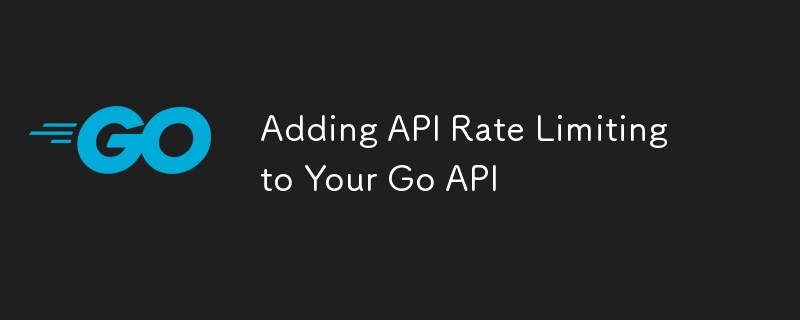

Alright, folks, we’ve covered a lot so far: JWT authentication, database connections, logging, and error handling. But what happens when your API starts getting slammed with requests? Without control, high traffic can lead to slow response times or even downtime. ?
This week, we’re going to solve that by implementing rate limiting to control the flow of traffic. We’ll be using the simple and effective golang.org/x/time/rate package. Later, when my own ThrottleX solution is ready, I’ll show you how to integrate that as a more scalable option. (Psst, check out my GitHub at github.com/neelp03/throttlex for updates! Feel free to comment any issues you see in there o7)
Rate limiting is like a bouncer for your API—it controls the number of requests users can make within a given timeframe. This prevents your API from getting overwhelmed, ensuring smooth and fair access for all users. Rate limiting is essential for:
The golang.org/x/time/rate package is part of the extended Go libraries and provides a straightforward token-based rate limiter. To get started, you’ll need to install it:
go get golang.org/x/time/rate
Let’s create a rate-limiting middleware that controls the number of requests a client can make. In this example, we’ll limit clients to 5 requests per minute.
package main
import (
"net/http"
"golang.org/x/time/rate"
"sync"
"time"
)
// Create a struct to hold each client's rate limiter
type Client struct {
limiter *rate.Limiter
}
// In-memory storage for clients
var clients = make(map[string]*Client)
var mu sync.Mutex
// Get a client's rate limiter or create one if it doesn't exist
func getClientLimiter(ip string) *rate.Limiter {
mu.Lock()
defer mu.Unlock()
// If the client already exists, return the existing limiter
if client, exists := clients[ip]; exists {
return client.limiter
}
// Create a new limiter with 5 requests per minute
limiter := rate.NewLimiter(5, 1)
clients[ip] = &Client{limiter: limiter}
return limiter
}
Now, let’s use the getClientLimiter function in a middleware that will restrict access based on the rate limit.
func rateLimitingMiddleware(next http.Handler) http.Handler {
return http.HandlerFunc(func(w http.ResponseWriter, r *http.Request) {
ip := r.RemoteAddr
limiter := getClientLimiter(ip)
// Check if the request is allowed
if !limiter.Allow() {
http.Error(w, "Too Many Requests", http.StatusTooManyRequests)
return
}
next.ServeHTTP(w, r)
})
}
Now let’s hook up our rate limiter to the API so every request has to pass through it:
func main() {
db = connectDB()
defer db.Close()
r := mux.NewRouter()
// Apply rate-limiting middleware globally
r.Use(rateLimitingMiddleware)
// Other middlewares
r.Use(loggingMiddleware)
r.Use(errorHandlingMiddleware)
r.HandleFunc("/login", login).Methods("POST")
r.Handle("/books", authenticate(http.HandlerFunc(getBooks))).Methods("GET")
r.Handle("/books", authenticate(http.HandlerFunc(createBook))).Methods("POST")
fmt.Println("Server started on port :8000")
log.Fatal(http.ListenAndServe(":8000", r))
}
By applying r.Use(rateLimitingMiddleware), we ensure that every incoming request is checked by the rate limiter before it reaches any endpoint.
Start your server:
go run main.go
Now, let’s hit the API with some requests. You can use a loop with curl to simulate multiple requests in a row:
for i in {1..10}; do curl http://localhost:8000/books; done
Since we set the limit to 5 requests per minute, you should see 429 Too Many Requests responses once you exceed the allowed rate.
And there you have it—rate limiting with golang.org/x/time/rate to keep your API stable and responsive under pressure. Rate limiting is a crucial tool for any scalable API, and we’re just scratching the surface here.
Once ThrottleX is production-ready, I’ll be posting a follow-up tutorial to show you how to integrate it into your Go API for even more flexibility and distributed rate limiting. Keep an eye on my ThrottleX GitHub repo for updates!
Next week, we’re going to containerize our API with Docker, so it’s ready to run anywhere. Stay tuned, and happy coding! ??
The above is the detailed content of Adding API Rate Limiting to Your Go API. For more information, please follow other related articles on the PHP Chinese website!




